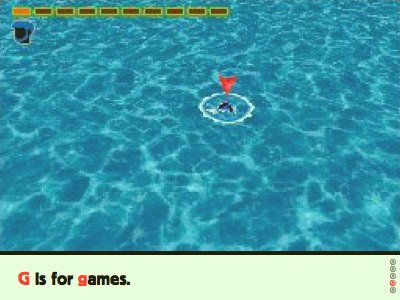The Experience Stack
Image: Close-up of Project Rub for the Nintendo DS; illustration taken from IGN.com. I’ve discussed Project Rub before.
Here’s the second.
I’ve been working this year, on and off, on some service design in mobile. One of the particular questions was how people would start using the service and finding out its capabilities.
I’ve talked about one way people figure out how to use something—a button looks like a button, so you try pressing it. When you press it, it gives slightly so you get into it. Then it does something, and you learn associate the cause and effect.
The Apple iPod works in the same way: the grey scroll-wheel doesn’t turn, so you can’t rely on people making a mechanical discovery. But it does have the visual affordance of being touched, because it looks like slightly grubby rubber of the kind people touch. So you try touching it, and inevitably move it a little, and the screen instantaneously responds… and ta-da you’ve discovered the cause-and-effect of the interface.
Not all systems are so simple. So for this service design brief we looked at other complex systems – video games – and brainstormed and tried to categorise the different ways in which they begin.
